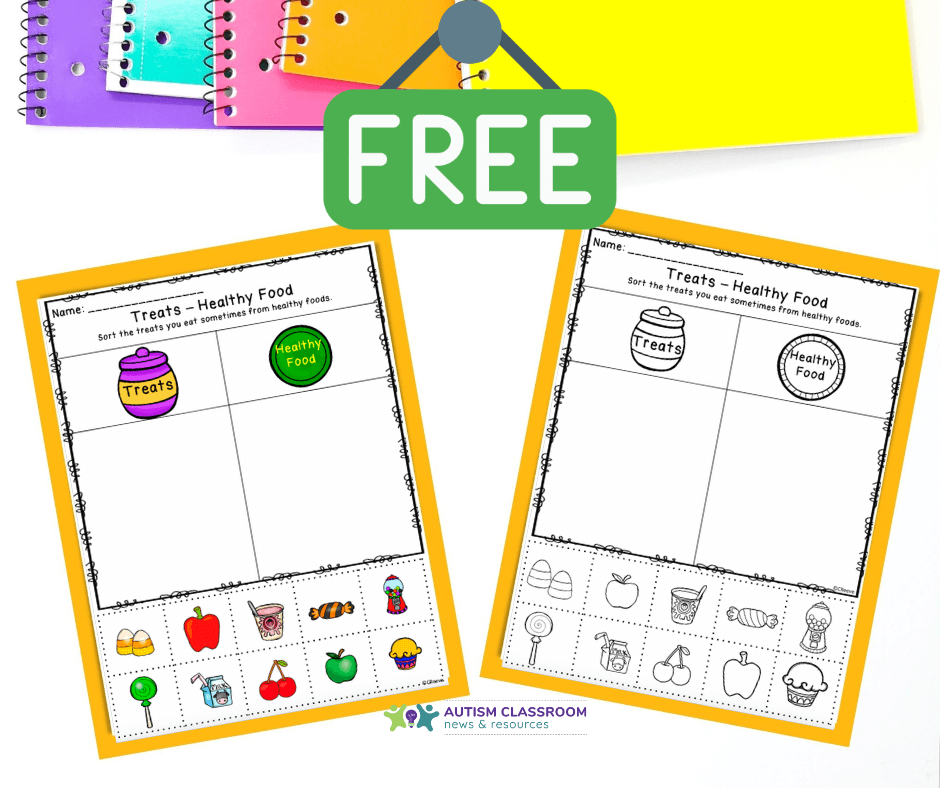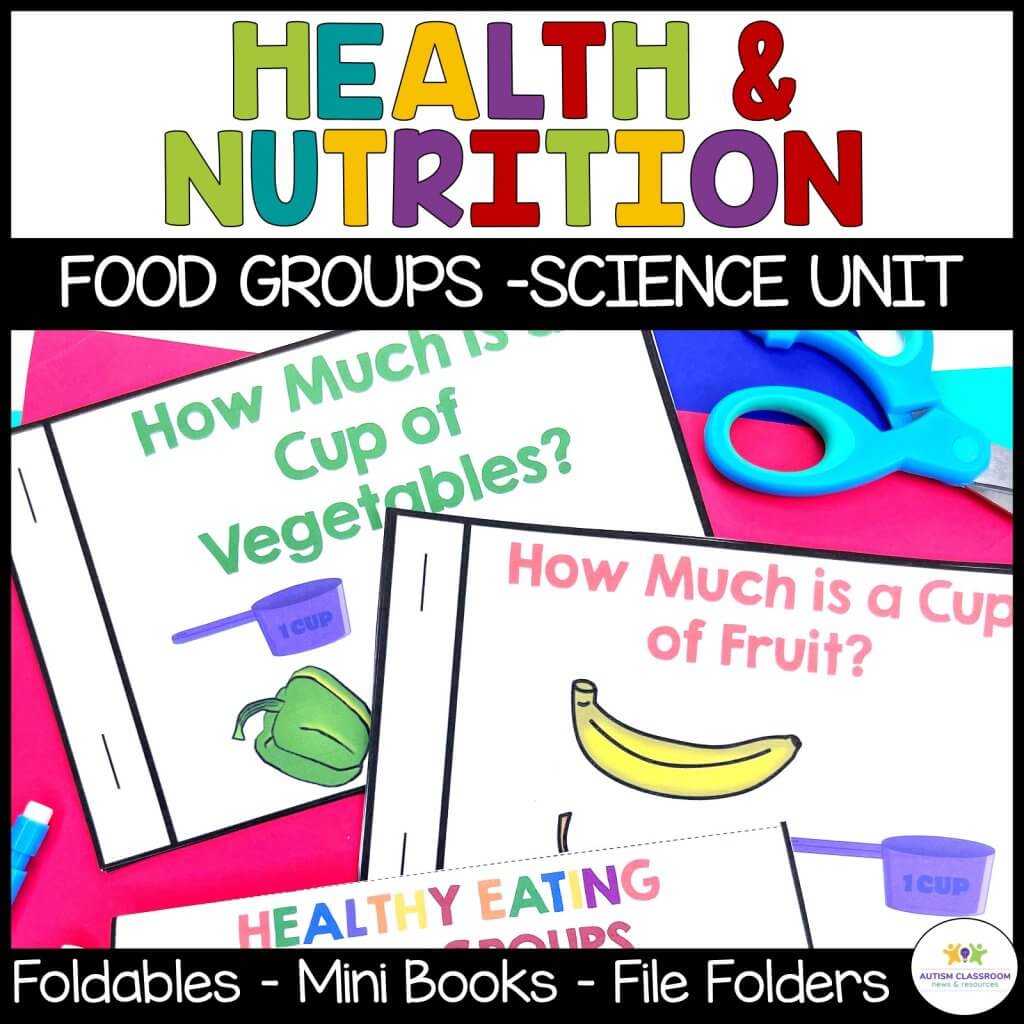Sharing is caring!
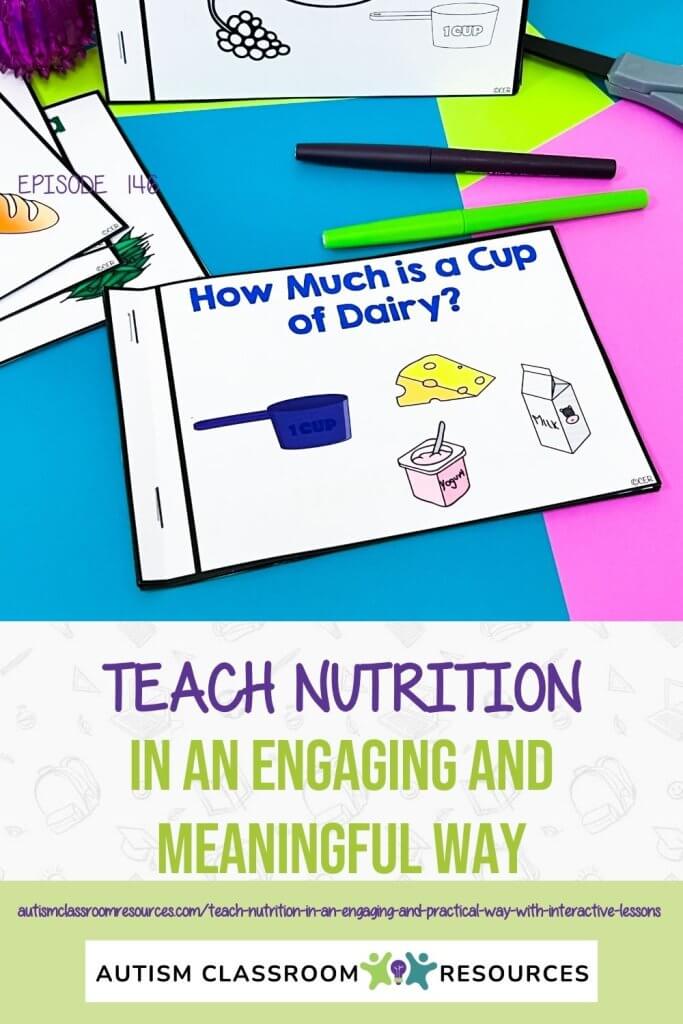
Teaching nutrition and helping students learn the science behind it is a critical life skills for students with significant disabilities, in particular. It’s important that we teach nutrition so students understand the science behind it but also how it actually applies to real life. The outcome of this instruction should include students learning basic nutrition information in order to plan healthy meals and make food choices that promote good health.
Why It’s So Important to Teach Nutrition in Life Skills Classes
People with intellectual and developmental disabilities are far more likely to be overweight or obese than the general population. Obesity affects 32% of typical adults and 17% of typical children in the US. However, those with IDD have prevalences from 27% to 59% for adults, 19 to 60% for adolescents, and 10-45% for children (Ptomey et al., 2020).
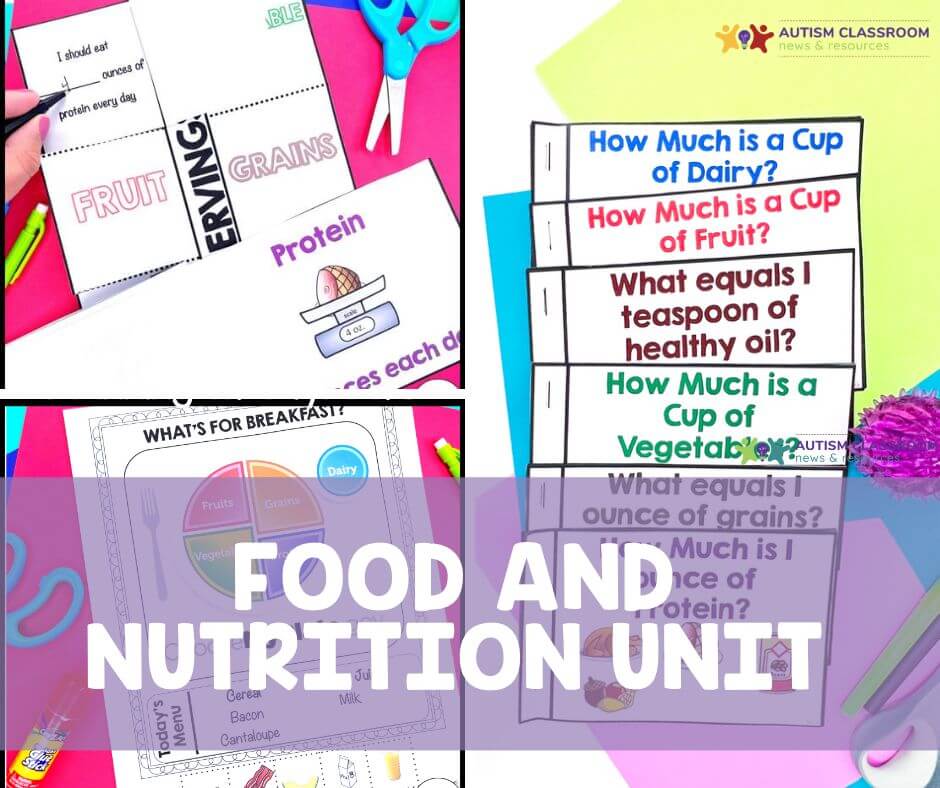
To help prevent these outcomes, we need to include life skills instruction for individuals with IDD that focuses on movement / exercise, and we also need to teach nutrition. This isn’t always a specific, explicitly taught part of the general education curriculum. However, it easily can be classified as part of science and health curricula. But students with IDD and other disabilities will need modified instruction to make it more concrete and more clearly applicable to their daily lives.
Teaching Nutrition Doesn’t Have to Be Boring
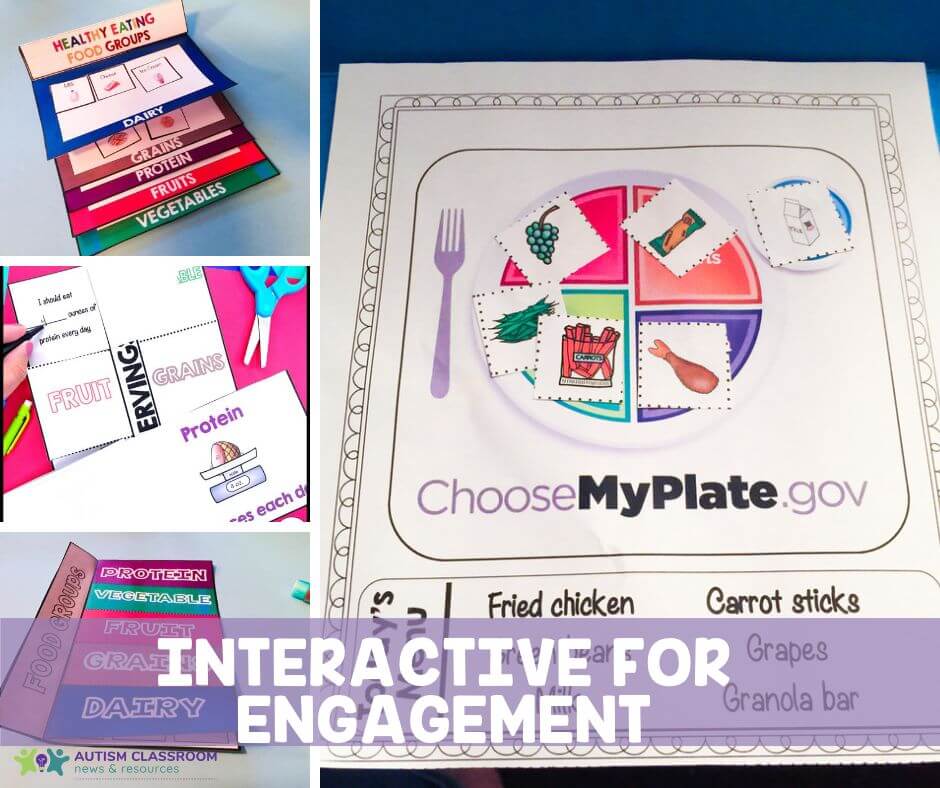
In addition, learning about nutrition is often something that is not addressed beyond learning the food groups. Learning about portion sizes and calories taken in vs. calories expended doesn’t have to be boring or didactic. Instead, try these interactive strategies for teaching nutrition in a meaningful and engaging way.
Teach the Food Groups
Yes, I know I said that we shouldn’t stop here. But we do probably need to START here. If your students don’t currently have an understanding of which foods are in which group, it’s going to be difficult to teach them how to combine the groups for health meals.
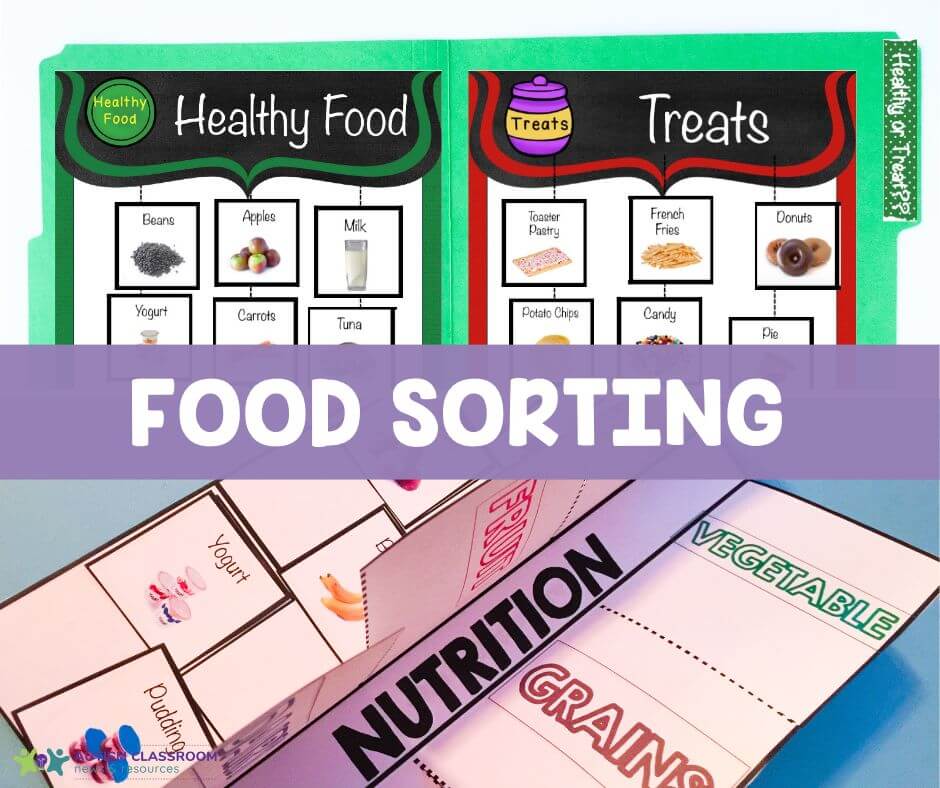
We can definitely start with food groups by having students sort pictures of food (or actual food or food containers) into categories much like we do with language concepts. But we need to go beyond just categorizing them to actually using that information.
So once students can start to identify items in the different group, think about folding your instruction into meal planning. These lessons can focus on real meals or cooking activities in your classroom. Check out this post for ways to fold your academics and life skills instruction together in cooking activities. And you can also include more paper-pencil types of activities.
These materials are part of my Food and Nutrition Unit in my store. They help introduce the different food groups and serving sizes. Students can practice sorting foods into food groups but also sorting foods that are animal-based from those that are plant-based.
You can grab a free sorting worksheet below.
Teach Nutrition Beyond the Food Groups-Include Portion Size and Healthy Eating
In addition to learning which foods go into which groups, we need to teach nutrition to include practical applications. Using My Plate is a good method for helping them visualize what proportion of foods should be eaten from the different types of food. You can see an example from the nutrition kit below.

In addition, it’s important to remember that the portion size of foods is often where healthy nutrition falls down. It’s ok to have some treats, but not if they are the majority of the meal. Similar, some bread is important as a grain, but too much pasta and bread types of starches will have a not-so-positive impact on weight.
Plus the portion sizes change from age to age and by gender. So making sure your have materials that meet the needs of all their learners and that they recognize that cooking for themselves or another person might require slightly different portion sizes.
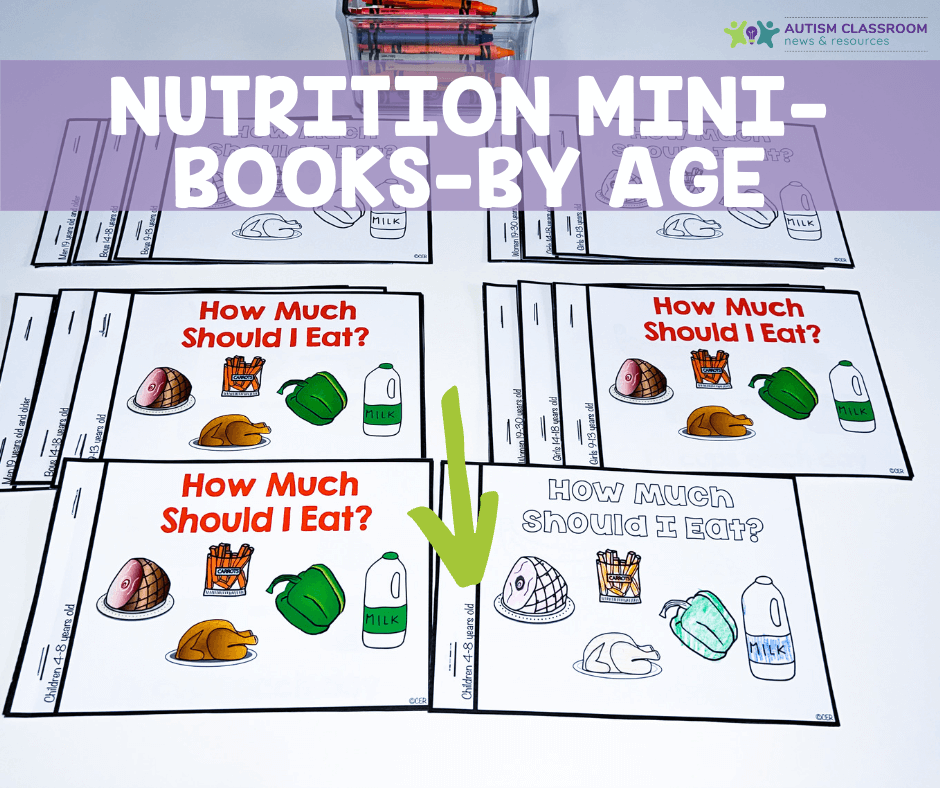
Finally, it’s important to teach students how to determine appropriately sized portions in easy ways. How do they decide what 3 oz. of fish looks like in a restaurant, for instance, where they don’t have a scale? The pack of cards model might work–or the size of your palm trick might as well. But they need to know about these strategies and practice them to use them fluently in everyday life.
Planning Meals Makes Teaching Nutrition Practical Information
Once you have the knowledge of the food groups, portion sizes, etc., our students need to practice planning meals. They need to have the opportunity to make decisions about food proportions and food servings. This type of learning is most practical when they are doing it “in real life.”
If you have followed this blog for a while, you know that I really love using cooking in the classroom. Cooking is an important life skill. And we can fold many, many academic concepts into teaching nutrition with cooking. Plus its pretty motivating for our students, so it is likely to keep them engaged.
I suggest using the My Plate template to help students plan meals. If you are using the Food and Nutrition unit from my store, you can also pull in the portion size books for the people they are cooking for as a reference. These provide visual references for the concepts being taught.
Repeat Teaching Nutrition and Providing Practice
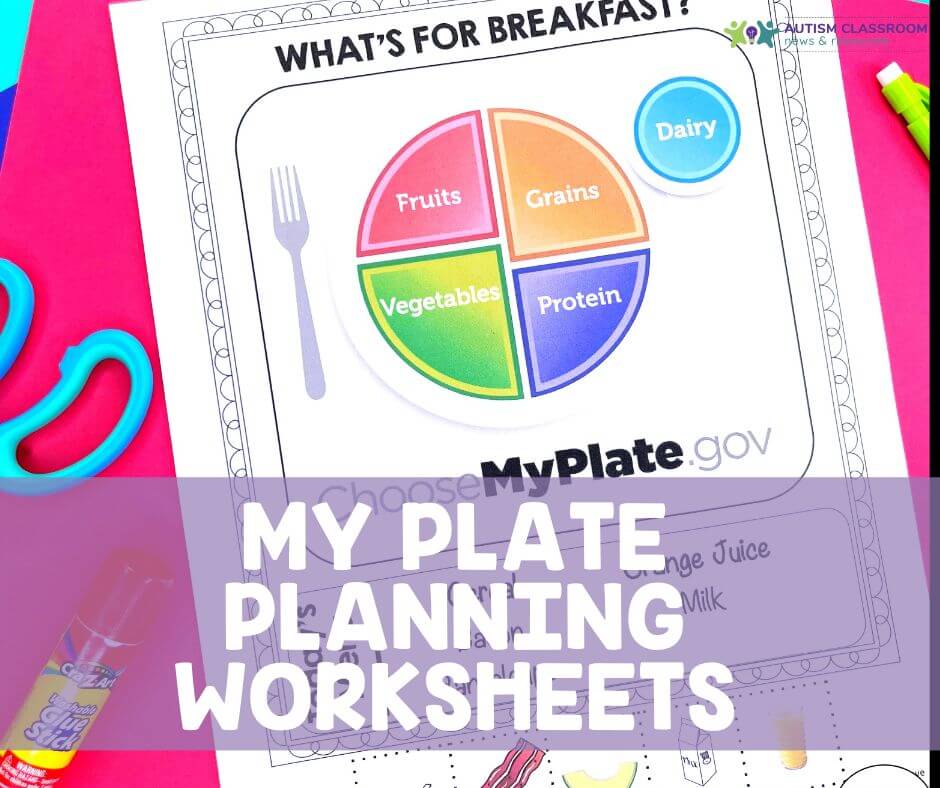
Finally, it’s important that students practice skills to maintain them and become more fluent with them. Healthy eating is all about creating healthy habits, for all of us. When we change our eating behavior, it takes time for that to come naturally and good choices to be our first choices. So opportunities to continue practicing with making health food choices is critical for students to use it successfully as a life skill.
Food and Nutrition – Healthy Eating, My Plate and Food Groups Interactive Teaching Tools.
If you are looking for tools to help you get started teaching nutrition in your life skills classroom, save yourself instruction planning time and grab this unit to get you started. The mini-books help to deliver information to students in smaller sections. The flip-flap books and file folders give them hands-on practice. And the My Plate planning tools help them see how to use that tool to plan meals.
Plus, the pencil-paper tools give you a way to document students’ understanding of the concepts and allow you to assess their progress when you are teaching nutrition. Click the picture to grab it in my store.
GRAB FREE WORKSHEETS AND CHECK OUT THE UNIT


![Teach nutrition in an engaging and practical way. [picture of mini-instruction book about serving size of dairy foods]](https://autismclassroomresources.com/wp-content/uploads/2023/02/TEACH-NUTRITION-IN-AN-ENGAGING-AND-PRACTICAL-WAY-FEATURE-IMAGE-1024x1024.jpg)
